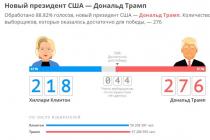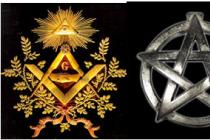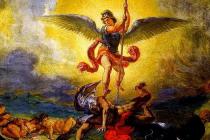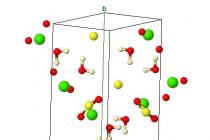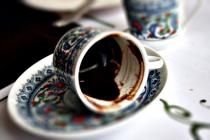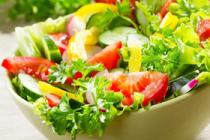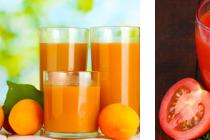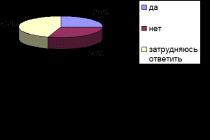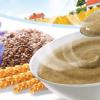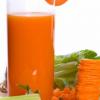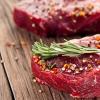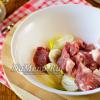The main purpose of diet No. 5 according to Pevzner is to spare liver function and treat biliary tract diseases by limiting fat intake with normal protein and carbohydrate intake. In addition, table No. 5 helps stimulate intestinal activity and normalize cholesterol levels.
Indications
:
chronic hepatitis, acute cholecystitis and hepatitis during the recovery period, cholecystitis and cholelithiasis without exacerbation, liver cirrhosis in the absence of liver failure, in all cases without concomitant diseases of the gastrointestinal tract.
general characteristics
: physiologically normal content of proteins and carbohydrates while limiting refractory fats, nitrogenous extractives and cholesterol; the diet is enriched with lipotropic substances (lecithin, methionine, choline) and contains a significant amount of fiber and liquid; The diet helps to normalize impaired liver and bile duct functions, regulate cholesterol and fat metabolism, accumulate glycogen in the liver, stimulate bile secretion and intestinal motor function.
: proteins 100 g (60% animal), fats – 80–90 g (30% vegetable), carbohydrates 400–450 g, energy value – 2800–2900 kcal.
: any bread baked yesterday or dried; milk, kefir, yogurt, sour cream as a seasoning for dishes, non-sour cottage cheese; cereal, vegetable, dairy soups, cabbage soup and vegetarian borscht; lean meats (beef, chicken, rabbit, turkey), boiled or baked, doctor’s and diet sausages; lean fish in pieces, boiled, baked, aspic (in vegetable broth), stuffed; boiled pasta; baked white omelette, no more than one yolk per day is allowed; assorted cereals in the form of porridges and puddings with the addition of carrots, dried fruits and cottage cheese; vegetables raw, boiled or baked; non-acidic fruits and berries, jelly, compotes, jellies, sugar, honey, jam, marmalade, marshmallows; parsley, dill, cinnamon, vanillin; tea (can be with lemon), coffee with milk, vegetable, fruit and berry juices, rosehip decoction.
Excluded foods and dishes
: fresh bread and bakery products; okroshka and soups with mushroom broth; fatty meats (duck, goose, game, brains, liver and kidneys), canned food and smoked meats; fatty types of fish, smoked, salted, canned fish, granular red and black caviar; hard-boiled or fried eggs; cream, cottage cheese with high acidity; radishes, radishes, turnips, legume dishes, spinach, sorrel, garlic, mushrooms and pickled vegetables; hot sauces, mustard, pepper and horseradish; ice cream, chocolate and cream products; coffee, cocoa, and cold drinks.
Diet
: dishes are prepared boiled or steamed; food is taken warm 5 times a day.
Sample one-day diet menu No. 5.
Breakfast: cottage cheese casserole in sour cream (140 g), oatmeal porridge with milk (200 g), tea (200 g).
Dinner: milk soup (500 g), cabbage rolls stuffed with rice and boiled meat (250 g), apple juice jelly (125 g).
Afternoon snack: tea (200 g), crackers (25 g).
Dinner: semolina casserole (250 g), compote (200 g).
For the night: kefir (200 g).
Diet No. 5a
Indications
:
chronic hepatitis, acute cholecystitis and hepatitis during the recovery period, cholecystitis and cholelithiasis without exacerbation, cirrhosis of the liver, accompanied by severe inflammatory processes in the stomach and intestines; after operations on the biliary tract.
general characteristics
: a physiologically complete diet with a sufficient content of proteins and carbohydrates, while limiting the amount of fat, salt, excluding foods high in purines, cholesterol, nitrogenous extractives, oxalic acid, coarse fiber; in the diet of diet No. 5 the content of lipotropic substances, such as lecithin, choline, methionine, water and vitamins, is increased.
Chemical composition and energy value
: proteins – 80–100 g (60% animal), fats – 70–80 g (20–25% vegetable), carbohydrates – 350–400 g, energy value – 2400–2800 kcal).
Recommended products and dishes
: yesterday's or dried wheat bread, unsweetened cookies; milk soups half and half with water, vegetarian soups with pureed vegetables and cereals, puree soups; lean beef, rabbit, turkey, skinless chicken in the form of minced meat, boiled or steamed; low-fat fish, boiled and steamed, aspic in vegetable broth; steamed white omelette, from half to one whole yolk per day; milk, low-fat kefir, low-fat cottage cheese, sour cream in dishes, grated mild cheese; butter and refined vegetable oil in small quantities in dishes; porridges well boiled or mashed with milk and half and half water (semolina, rice, rolled oatmeal and buckwheat), boiled vermicelli; boiled, steamed or pureed raw vegetables, boiled or stewed pumpkin and zucchini; raw ripe sweet fruits and berries, jelly, jelly, marshmallows, marshmallows, honey, sugar, jam; tea with lemon, milk, coffee with milk, rose hip decoction, sweet fruit and berry juices.
Excluded foods and dishes
: rye, as well as any fresh bread, butter and puff pastry products; broths of meat, fish, mushrooms, from unprocessed vegetables and cereals; fatty meats, goose, duck, game, liver, kidneys, brains, fried pieces of meat, smoked meats, sausages, canned food; fatty fish, smoked, salted, stewed, fried, canned fish, caviar; fried and hard-boiled eggs; milk in its natural form, full-fat and high-acid cottage cheese, cream, sharp cheese; millet, barley and pearl barley, crumbly porridge, legumes; radishes, turnips, cabbage, sorrel, spinach, garlic, onions, pickled, salted and pickled vegetables, mushrooms; sour hard fruits, berries with hard grains, spices, chocolate, halva, products with cream, ice cream; coffee, cocoa, cold and carbonated drinks.
Diet
: boiled food is consumed liquid and pureed 5 times a day in a warm form.
Approximate one-day menu for diet No. 5a.
Breakfast: soft-boiled egg (100 g), pureed oat milk porridge (250 g), tea with milk (200 g).
Dinner: pureed pearl barley soup with vegetables (500 g), steamed meat balls with milk sauce (160 g), mashed potatoes (240 g), fruit jelly (200 g).
Afternoon snack: baked apples (100 g).
Dinner: steam curd soufflé (140 g), tea (200 g).
For the night: fruit jelly (200 g).
All day: wheat crackers (100 g), butter (25 g), sugar (25 g).
Diet No. 5p
Option I
Indications
:
acute pancreatitis (from 3–4 days) and exacerbation of chronic pancreatitis at the beginning of treatment.
general characteristics
: a diet with reduced energy value, normal protein content, significant limitation of fats and carbohydrates by excluding foods containing coarse fiber and stimulating the secretion of digestive glands; helps to inhibit the exocrine function of the pancreas, the synthesis of protein necessary for the construction of pancreatic enzymes, the prevention of fatty infiltration and dystrophy of the pancreas and liver.
Chemical composition and energy value
: proteins – 80 g (30–35% animal, fats – 40–60 g (25% vegetable), carbohydrates – 200 g, energy value – 1500–1700 kcal.
Recommended products and dishes
: crackers from wheat bread (50 g per day); mucous soups from semolina, oatmeal, rice, pearl barley with the addition of boiled meat; lean meat, beef, rabbit, chicken, turkey, boiled or steamed in pureed form; pureed lean fish; steamed egg white omelet, up to half a yolk per day; milk added to dishes, non-acidic cottage cheese in the form of paste; pureed, semi-viscous porridge (buckwheat, oatmeal); potatoes, carrots, zucchini, pumpkin, mashed cauliflower; mashed compotes, jelly, jellies prepared with xylitol or sorbitol; weak tea, rosehip decoction.
Excluded foods and dishes
: flour products; soups with meat and fish broth, decoction of mushrooms and vegetables, cabbage soup, borscht, okroshka; fatty meats, lamb, pork, goose, duck, liver, kidneys, brains, fried and stewed, smoked meats, sausages, canned food; fatty types of fish, fried, stewed, smoked, salted, canned, caviar; boiled or fried eggs; natural milk, cream, lactic acid drinks, sour cream, full-fat cottage cheese, salty and fatty cheese; millet and barley crumbly porridges, pasta, legumes; white cabbage, radish, turnip, radish, rutabaga, spinach, sorrel, garlic, onion; coffee, cocoa, chocolate, vegetable and fruit juices.
Diet
: food is boiled or steamed and consumed in liquid and semi-liquid consistency, divided into 5-6 meals per day.
Approximate one-day menu of diet option No. 5p
1st breakfast: steamed protein omelette (110 g), pureed oatmeal porridge with water (280 g), tea (200 g).
2nd breakfast: carrot soufflé (100 g), tea (200 g).
Dinner: pureed rice soup (200 g), steamed fish souffle (120 g), fruit jelly with xylitol (125 g).
Afternoon snack: low-fat cottage cheese (60 g), rosehip decoction (200 g) with crackers.
Dinner: boiled meat soufflé (110 g), steamed pumpkin soufflé (200 g).
For the night: rosehip decoction (200 g).
All day: crackers (50 g), sugar (5 g).
Diet No. 5p
Option II
Indications
:
chronic pancreatitis in the stage of subsiding exacerbation (starting from the 6th day, after option 1 of diet No. 5p) or remission (within 2–4 months).
general characteristics
: a diet that is normal in energy value with a high content of protein, lipotropic substances and vitamins, limiting the amount of carbohydrates and refractory fats, cholesterol, and coarse fiber.
Chemical composition and energy value
: proteins – 130–140 g (60–70% animal, fats – 80 g (15–20% vegetable), carbohydrates – 300–350 g, energy value – 2500–2700 kcal).
Recommended products and dishes
: similar to diet No. 5a with the exception of honey, sugar, jam, confectionery, etc.; xylitol (30-40 g) is partially used instead of sugar.
Excluded foods and dishes
: similar to diet No. 5a
Diet
: Boiled or steamed food is served in crushed form 5-6 times a day.
Sample one-day menuII diet option No. 5p
1st breakfast: boiled chicken (55 g), buckwheat milk porridge without sugar (280 g), tea (180 g).
2nd breakfast: baked apples without sugar (120 g), calcined cottage cheese (100 g).
Dinner: vegetarian vegetable soup (250 g), boiled meat stew with vegetables (55/240 g), dried fruit compote with xylitol (180 g).
Afternoon snack: steamed meatballs in milk sauce (110 g).
Dinner: boiled cod (90 g), cottage cheese soufflé without sugar (130 g), tea (180 g).
For the night: kefir (180 g).
Medical nutrition is a mandatory method of complex treatment of the patient. The founder of dietetics M.I. Pevzner believed that nutrition is the background against which other therapeutic methods of treatment are used, and he developed 15 dietary tables. A medical diet for hereditary diseases associated with impaired absorption of substances is the only method of treatment, one of the main ones for, gastrointestinal diseases . In other cases, compliance with it prevents complications and progression of the disease. A numbered diet system has been approved, which is mandatory for all medical and sanatorium institutions and dietary canteens.
Medical nutrition (diet therapy) is based on the physiology and biochemistry of nutrition, on knowledge of the role of nutrients, the balance of diet and diet. It takes into account the causes, mechanisms and forms of disease, as well as the digestive characteristics of a sick person. Gastroenterology, as the science of treating gastrointestinal diseases, has a section on the dietary nutrition of patients.
Diet No. 5 , Table No. 5 according to Pevzner is recommended for various diseases of the liver and gall bladder. It is also prescribed for chronic colitis with and for chronic colitis without pronounced disorders. We can say that this is a universal diet, and the most common table, on the basis of which many varieties have been created, which will be discussed below.
Wikipedia offers a description of the diet, but a more accurate and detailed description of the therapeutic Diet No. 5 can be found in dietetic reference books. They provide a description of the main table and its varieties depending on the stage of the disease (exacerbation, recovery, stable remission). Varieties of diets, to varying degrees, exclude mechanical and chemical irritants, and also provide for the presence of concomitant diseases.
The 5th dietary table provides for chemical sparing of the liver with adequate nutrition, as well as improvement of fat and cholesterol metabolism. For liver disease, a gentle diet is indicated, which helps normalize its function and at the same time improves bile secretion. Essential oils and extractives are strong chemical irritants, so they are excluded from the diet. Fried meat, dried and smoked foods are harmful to the liver and have a negative mechanical and chemical effect. Steamed or boiled dishes made from chopped meat and vegetables have a weak effect.
This diet contains a reduced amount of fats (due to refractory and poorly digestible), table salt (6-10 g), limits the consumption of egg yolks and foods rich in purines . Uric acid found in large quantities in animal liver, meat of young animals and birds, baker's yeast, smoked sprat, sardines, tuna, sprats, herring, salmon caviar, salmon, dried porcini mushrooms, smoked eel, mackerel, shrimp, mussels. All of them are excluded from the diet - thus, this hypooxalate diet .
It contains increased content fiber , pectins And lipotropic substances (that’s why it’s called lipotropic) - these are irreplaceable, found in beef and lean fish. Soybeans, whey, buttermilk and buckwheat are rich in them. Lipotropic substances protect the liver from fatty degeneration, reduce the risk of cholesterol stones in the bladder and reduce deposits cholesterol in vessels. Fiber, polyunsaturated fatty acids, and phytosterols And lecithin . The last three substances are found in vegetable oils (corn, flaxseed, sunflower and others).
Dishes are prepared stewed, boiled or baked, which provides chemical sparing of the liver. Cooking foods by frying is excluded. Dishes are not wiped (only stringy meat and rough vegetables). It is mandatory to provide fractional meals, which promotes the regular outflow of bile. The calorie content of the diet is 2400-2600 kcal (proteins - 90 g, carbohydrates - 400 g, fats - 80 g). Salt intake is limited, liquids should be drunk within 1.5 liters.
One of the key products is lean meat and there is a large selection of it - beef, chicken, turkey, veal and even lean pork. It is recommended to eat low-fat fish, up to 3 times a week. The vegetable composition is also quite diverse: almost all the vegetables we often use, as well as non-acidic sauerkraut. The important thing is that fruits and berries are allowed in any form.
Not allowed:
- fatty meat, fried foods, smoked meats, liver, brains, canned food, kidneys, stewed meat, sausages, lard, cooking fats;
- products that increase fermentation and decay (legumes, millet, white cabbage, if poorly tolerated by the patient);
- secretion stimulants (spices, mushrooms, horseradish, pickled vegetables, mustard, salted, fermented foods);
- extractives (broths from legumes, fish and mushrooms, meat);
- products with essential oils (turnips, radishes, all types of radishes, green onions, garlic);
- sour fruits (citrus fruits, sour plums, cranberries);
- cream, fatty and sour cottage cheese;
- coffee, cocoa, carbonated drinks, chocolate, ice cream, confectionery with cream.
List of products that are allowed:
- stale wheat bread or crackers;
- vegetarian soups with permitted vegetables, as well as soups with boiled cereals (rice, pearl barley, oatmeal, buckwheat), flour and vegetables for seasoning soups and meat dishes are not sautéed;
- lean meat and fish, eating poultry is allowed in baked pieces;
- low-fat boiled, steamed fish (in pieces and in the form of minced meat);
- milk, fermented milk products, low-fat and half-fat cottage cheese;
- protein steam omelettes, one yolk per day can only be added to dishes;
- porridge from cereals: rice, buckwheat, oatmeal, rolled oats, boiled in water and half with milk;
- boiled thin vermicelli;
- boiled and stewed vegetables;
- ripe fruits (baked and raw), jelly, pureed dried fruits;
- honey, sugar, milk jelly, jam, marshmallows, marmalade;
- butter in dishes (20 g per day);
- tea with lemon and sugar, weak coffee, sweet juices, rosehip infusion.
Diet 5th table for cholecystitis
Nutrition for cholecystitis depends on the stage of the disease. In the first days of an exacerbation, complete fasting is carried out in order to maximally spare the gastrointestinal tract. The patient is only allowed to take liquids: weak tea, diluted juices, rosehip infusions. On the 3rd day it is prescribed Diet No. 5B , excluding any mechanical and chemical irritants. It is recommended while the patient is on strict bed rest (4-5 days).
It limits carbohydrates to 200 g (due to simple ones - sugar, jams), reduces protein (up to 80 g), and the amount of fat. Food is prepared without salt and only pureed. It is important to eat small meals (at least 5 times) and eat in small portions. The calorie content of the daily diet is 1600 kcal, fluid intake is provided (up to 2.5 l/day).
- Light pureed food with water and without butter.
- Slimy soups (based on oatmeal, rice and semolina).
- Liquid pureed porridge (oatmeal and rice) with the addition of milk.
- Puree compotes, jellies, vegetable juices.
- Somewhat later, pureed boiled meat (a little), low-fat cottage cheese, and steamed fish are introduced.
- Wheat bread or crackers.
After 10 days, patients are transferred to. Outside of exacerbation, moderate sparing of the gallbladder and liver and normalization of bile secretion function are provided, which are provided by Table No. 5. Fats (especially refractory fats) are somewhat limited in the diet. Dishes are prepared boiled, steamed, and baking without crust is already allowed. Since nutrition for cholecystitis in remission is aimed at moderate stimulation of bile secretion, it contains:
- Salads and vinaigrettes seasoned with unrefined vegetable oil (they need to be changed).
- Various vegetables, berries and fruits.
- A large amount of fiber (due to the consumption of cereals, vegetables and fruits), which is necessary if you have constipation.
- Chicken eggs (no more than one), since the yolks are a strong choleretic product. In case of pain and bitterness in the mouth, which may occur when eating eggs, only dishes made from egg whites are allowed.
Diet No. 5 can be used up to 1.5-2 years.
Biliary dyskinesia is a frequent companion and. Characterized by impaired tone or motility of the biliary system. Depending on the disorders, dyskinesia can be hypertonic-hyperkinetic (increased tone and increased motility) and hypotonic-hypokinetic (weak motility and weakened tone of the biliary tract).
Proper nutrition for dyskinesia allows you to avoid attacks and is a prevention of cholelithiasis. The diet for these two types contains general rules:
- Eat small portions (150 grams) and (5-6 times).
- Maintain 3-4 hour intervals.
- Have dinner 3 hours before bedtime, eating light food (kefir, fruit).
- Avoid eating cold or very hot foods.
- Do not use animal fats (pork, goose, lamb) or trans fats (margarine, spread).
With hypomotor dyskinesia, foods that stimulate the motility of the gallbladder are allowed: vegetables, fruits, bran, vegetable oil, sour cream, eggs and black bread, cream.
With hypermotor dyskinesia, on the contrary, foods that stimulate bile formation are excluded: fatty dairy products, animal fats, black bread, raw vegetables, broths and carbonated water.
Diet No. 5 for cholelithiasis
Nutrition for cholelithiasis during remission does not differ from that described above. The base table is also shown in this case. In case of gallstones, restrictions apply only to the consumption of egg yolks - only 0.5 yolks per dish are allowed; indigestible fats are prohibited. Vegetable oils are allowed in quantities that do not cause attacks.
Due to topographic proximity, common blood supply and innervation, with cholelithiasis and cholecystitis, the gastroduodenal system, pancreas (chronic development) and intestines are involved in the pathological process.
For combined pathology with pancreatitis and cholecystitis, it is used. It is characterized by an increase in protein content (up to 120 g) and an even greater limitation of fats and carbohydrates, which stimulate the function of the pancreas. Extractive substances (cabbage broth, meat and fish broths) and coarse fiber from vegetables must be limited. All dishes are served boiled or steamed, chopped. The diet is prescribed for 3 months, then it is expanded.
It happens that the underlying disease is accompanied by gastroduodenitis . Symptoms depend on the stage of the disease, and treatment necessarily includes dietary nutrition. For gastroduodenitis in the acute stage, nutrition is prescribed within the limits. Diets have a lot in common: they exclude dishes that cause gastric secretion. Food is recommended to be liquid or mushy, boiled and pureed. Avoid foods rich in fiber (turnips, peas, radishes, beans, radishes, asparagus), fruits with rough skin (gooseberries, dates, currants, grapes), whole grain bread, as well as coarse stringy meat, poultry and fish skin.
The 5th diet according to Pevzner is often used when in remission, since it provides chemical sparing of the mucous membrane. In this case, white cabbage and corn are additionally excluded, as vegetables that have coarse fiber and cause. Pearl barley, corn, barley and millet cereals, full-fat milk, cream, and fermented baked milk are not recommended.
If there is gastritis in the acute stage in combination with cholecystitis, as well as with, especially with severe pain, it is indicated Table No. 5B . It is considered to be as gentle as possible, since food is prepared without salt and is served only pureed in the form of slimy soups, soufflés and purees.
Diet No. 5 after gallbladder removal
It should be noted that conservative treatment is not always effective. With frequent exacerbations of cholecystitis, in the presence of complications (purulent, phlegmonous cholecystitis), as well as with cholelithiasis, removal of the gallbladder cannot be avoided. Nutrition is the most important component of the postoperative recovery period. 12 hours after the operation, you are allowed to drink still water in small sips (up to 500 ml per day). On the second day, kefir, unsweetened tea, and jelly are introduced into the diet in portions of no more than 0.5 cups at intervals of 3 hours.
The postoperative diet expands for 3-4 days - frequent meals are allowed (up to 8 times a day) in portions of 150 g: pureed soups with water, mashed potatoes (semi-liquid), egg white omelet, grated boiled fish, fruit jelly. You can drink juices (apple, pumpkin) and tea with sugar. On the fifth day, biscuits and dry wheat bread are introduced. After a week, grated porridge (buckwheat, oatmeal), boiled rolled meat, low-fat cottage cheese and vegetable puree are allowed. After this, the patient can be transferred to Table No. 5A , a little later - to Table No. 5. Recipes for the dishes will be given below.
Fatty liver disease is the most common disease in hepatology. The pathogenesis of the disease is associated with insulin resistance, as a result of which they accumulate in the liver. triglycerides with the formation of fatty hepatosis, which over time leads to the development of destructive changes in the liver ( steatohepatitis ). In general, the disease is asymptomatic and is accidentally discovered during biochemical examination and ultrasound. Characterized by an increase in the activity of ALT, AST and alkaline phosphatase , increase bilirubin , hypercholesterolemia And hypertriglyceridemia . In some patients it is detected.
For fatty liver disease, weight loss is recommended, which is achieved through diet and exercise. Patients need to follow the diet of Table No. 5, but in addition it is necessary to reduce the energy value of the diet. The allowed minimum calorie intake for women is at least 1200 kcal and 1500 kcal for men. A weight loss of 5-10% leads to a decrease in the activity of ALT, AST, hepatosplenomegaly and helps reduce steatosis . It is safe to lose weight by 1500 g per week.
- Elimination of butter, margarine, animal fat and consumption of foods with polyunsaturated fatty acids (seafood, fish, vegetable oils, poultry, olives, nuts, if energy needs allow).
- Reducing cholesterol intake from foods (up to 300 mg per day) - excluding caviar, egg yolks, offal, raw smoked sausages, fatty dairy products and fatty meats.
- Exclusion of dishes prepared by frying and deep-frying.
- Enrichment of food with vitamins (fruits, artichokes, Jerusalem artichokes, leeks).
- At diabetes mellitus - exclusion of simple carbohydrates.
Among the innate functional bilirubinemia , comes first. It is believed that 1-5% of the population have this syndrome. The cause is a binding disorder bilirubin which is inherited. No other pathological changes in the liver are detected. Provoking factors for periodic increases in bilirubin in the blood are infections, overload, and sulfonamides , oral contraceptives , salicylates . In some cases, it first appears during the recovery period with.
The effect of hunger is very pronounced in this disease - there is an increase in the level of unconjugated bilirubin. Therefore, it is necessary to eat rationally within this dietary table and avoid long periods of eating. You also need to maintain sufficient water load to prevent thickening of bile and use additional fat-soluble and microelements.
It is necessary to completely avoid products containing preservatives and dyes, fatty meats and fish. The consumption of fried foods and alcohol is unacceptable throughout your life. Meals for hepatitis C should be divided into 5-6 meals.
Below is not a table of products, but a list of products and dishes that will help you understand what you can and cannot eat as part of this dietary table for all of the above diseases.
Varieties
- Table No. 5A - creates maximum liver rest, prescribed for acute hepatitis And cholecystitis and exacerbation of chronic diseases (hepatitis, cholecystitis and gastrointestinal tract), liver cirrhosis in the compensation stage.
- 5V - with severe exacerbation of chronic hepatitis And cholecystitis , liver cirrhosis with moderate deficiency, with peptic ulcer And gastritis which are combined with hepatitis or cholecystitis.
- 5P - in case of chronic disease in the recovery stage or without exacerbation. Normalizes the function of the pancreas, reduces the excitability of the gallbladder, spares the stomach, liver and intestines.
- 5GA - hypoallergenic diet, which is based on the basic Table No. 5, but additionally excludes all seafood, fish, caviar, eggs, processed cheeses, ice cream, bell peppers, pickles, sauerkraut, peanuts, sesame seeds, hazelnuts, sunflower seeds, citrus fruits, strawberries, apricots, peaches, raspberries, grapes, pomegranates, pineapple, melon, sea buckthorn, kiwi, semolina and wheat cereals, whole milk, flavored fruit drinks, cakes, chocolate, marshmallows, marshmallows.
- 5Ш - postcholecystectomy syndrome with availability duodenitis and exacerbation of chronic gastritis. It provides maximum sparing of the digestive organs and reduction of bile secretion.
- 5G or 5 L/F - prescribed for hypotension of the gallbladder with symptoms of bile stagnation and in a state after cholecystectomy with stagnation of bile in the liver. Nutrition is aimed at enhancing bile secretion and improving intestinal circulation of bile, so the diet includes polyunsaturated fatty acids and proteins.
- 5P - at dumping syndrome after resection for an ulcer.
Indications
For what diseases is this diet prescribed?
- acute cholecystitis And hepatitis in the recovery stage;
- chronic hepatitis beyond exacerbation;
- in remission;
- with (provided there is no liver failure);
- chronic cholecystitis (beyond exacerbation).
Authorized Products

Table of permitted products
| Proteins, g | Fats, g | Carbohydrates, g | Calories, kcal | |
Vegetables and greens |
||||
| eggplant | 1,2 | 0,1 | 4,5 | 24 |
| zucchini | 0,6 | 0,3 | 4,6 | 24 |
| cabbage | 1,8 | 0,1 | 4,7 | 27 |
| broccoli | 3,0 | 0,4 | 5,2 | 28 |
| carrot | 1,3 | 0,1 | 6,9 | 32 |
| cucumbers | 0,8 | 0,1 | 2,8 | 15 |
| salad pepper | 1,3 | 0,0 | 5,3 | 27 |
| parsley | 3,7 | 0,4 | 7,6 | 47 |
| iceberg lettuce | 0,9 | 0,1 | 1,8 | 14 |
| tomatoes | 0,6 | 0,2 | 4,2 | 20 |
| pumpkin | 1,3 | 0,3 | 7,7 | 28 |
| dill | 2,5 | 0,5 | 6,3 | 38 |
Fruits |
||||
| bananas | 1,5 | 0,2 | 21,8 | 95 |
| apples | 0,4 | 0,4 | 9,8 | 47 |
Nuts and dried fruits |
||||
| raisin | 2,9 | 0,6 | 66,0 | 264 |
| dried figs | 3,1 | 0,8 | 57,9 | 257 |
| dried apricots | 5,2 | 0,3 | 51,0 | 215 |
| dried apricots | 5,0 | 0,4 | 50,6 | 213 |
| prunes | 2,3 | 0,7 | 57,5 | 231 |
Cereals and porridges |
||||
| buckwheat (kernel) | 12,6 | 3,3 | 62,1 | 313 |
| oat groats | 12,3 | 6,1 | 59,5 | 342 |
| pearl barley | 9,3 | 1,1 | 73,7 | 320 |
| rice | 6,7 | 0,7 | 78,9 | 344 |
Flour and pasta |
||||
| pasta | 10,4 | 1,1 | 69,7 | 337 |
| noodles | 12,0 | 3,7 | 60,1 | 322 |
| buckwheat noodles | 14,7 | 0,9 | 70,5 | 348 |
Bakery products |
||||
| bran bread | 7,5 | 1,3 | 45,2 | 227 |
| whole grain bread | 10,1 | 2,3 | 57,1 | 295 |
Confectionery |
||||
| jam | 0,3 | 0,2 | 63,0 | 263 |
| jelly | 2,7 | 0,0 | 17,9 | 79 |
| marshmallows | 0,8 | 0,0 | 78,5 | 304 |
| milk candies | 2,7 | 4,3 | 82,3 | 364 |
| fondant candies | 2,2 | 4,6 | 83,6 | 369 |
| fruit and berry marmalade | 0,4 | 0,0 | 76,6 | 293 |
| paste | 0,5 | 0,0 | 80,8 | 310 |
| Maria cookies | 8,7 | 8,8 | 70,9 | 400 |
Raw materials and seasonings |
||||
| honey | 0,8 | 0,0 | 81,5 | 329 |
| sugar | 0,0 | 0,0 | 99,7 | 398 |
Dairy |
||||
| kefir 1.5% | 3,3 | 1,5 | 3,6 | 41 |
| Ryazhenka | 2,8 | 4,0 | 4,2 | 67 |
Cheeses and cottage cheese |
||||
| cottage cheese 1% | 16,3 | 1,0 | 1,3 | 79 |
Meat products |
||||
| beef | 18,9 | 19,4 | 0,0 | 187 |
| rabbit | 21,0 | 8,0 | 0,0 | 156 |
Bird |
||||
| boiled chicken breast | 29,8 | 1,8 | 0,5 | 137 |
| boiled chicken drumstick | 27,0 | 5,6 | 0,0 | 158 |
| boiled turkey fillet | 25,0 | 1,0 | - | 130 |
Eggs |
||||
| soft-boiled chicken eggs | 12,8 | 11,6 | 0,8 | 159 |
Fish and seafood |
||||
| flounder | 16,5 | 1,8 | 0,0 | 83 |
| pollock | 15,9 | 0,9 | 0,0 | 72 |
| cod | 17,7 | 0,7 | - | 78 |
| hake | 16,6 | 2,2 | 0,0 | 86 |
Oils and fats |
||||
| butter | 0,5 | 82,5 | 0,8 | 748 |
| olive oil | 0,0 | 99,8 | 0,0 | 898 |
| sunflower oil | 0,0 | 99,9 | 0,0 | 899 |
Non-alcoholic drinks |
||||
| water | 0,0 | 0,0 | 0,0 | - |
| mineral water | 0,0 | 0,0 | 0,0 | - |
| green tea | 0,0 | 0,0 | 0,0 | - |
Juices and compotes |
||||
| apricot juice | 0,9 | 0,1 | 9,0 | 38 |
| carrot juice | 1,1 | 0,1 | 6,4 | 28 |
| peach juice | 0,9 | 0,1 | 9,5 | 40 |
| plum juice | 0,8 | 0,0 | 9,6 | 39 |
| tomato juice | 1,1 | 0,2 | 3,8 | 21 |
| pumpkin juice | 0,0 | 0,0 | 9,0 | 38 |
| rose hip juice | 0,1 | 0,0 | 17,6 | 70 |
Fully or partially limited products
Prohibited foods and dishes include:
- Fresh bread, pastries, fried pies, cakes, puff pastry, baked goods.
- Products containing oxalic acid (sorrel, spinach), essential oils (radish, radish, garlic, onion), as well as highly extractive dishes (all broths).
- It is not allowed to eat fatty meat and fish, smoked meats, caviar, salted fish, sausages, and canned food.
- Eating okroshka and sauerkraut cabbage soup is not allowed.
- By-products high in cholesterol (liver, kidneys, brains, cod liver) are also excluded from the diet.
- Legumes and vegetables with coarse fiber (radishes, turnips, radishes), and in case of poor tolerance - white cabbage.
- Cooking fats and animal lard, goose and duck meat, hard-boiled and fried eggs.
- Full-fat milk and cream, hot seasonings: horseradish, mustard, pepper, ketchup, mayonnaise are prohibited.
- Black coffee, chocolate, and cocoa are also excluded.
Table of prohibited products
| Proteins, g | Fats, g | Carbohydrates, g | Calories, kcal | |
Vegetables and greens |
||||
| canned vegetables | 1,5 | 0,2 | 5,5 | 30 |
| swede | 1,2 | 0,1 | 7,7 | 37 |
| peas | 6,0 | 0,0 | 9,0 | 60 |
| bulb onions | 1,4 | 0,0 | 10,4 | 41 |
| chickpeas | 19,0 | 6,0 | 61,0 | 364 |
| radish | 1,2 | 0,1 | 3,4 | 19 |
| white radish | 1,4 | 0,0 | 4,1 | 21 |
| beans | 7,8 | 0,5 | 21,5 | 123 |
| horseradish | 3,2 | 0,4 | 10,5 | 56 |
| spinach | 2,9 | 0,3 | 2,0 | 22 |
| sorrel | 1,5 | 0,3 | 2,9 | 19 |
Berries |
||||
| grape | 0,6 | 0,2 | 16,8 | 65 |
Mushrooms |
||||
| mushrooms | 3,5 | 2,0 | 2,5 | 30 |
| marinated mushrooms | 2,2 | 0,4 | 0,0 | 20 |
Nuts and dried fruits |
||||
| nuts | 15,0 | 40,0 | 20,0 | 500 |
| almond | 18,6 | 57,7 | 16,2 | 645 |
Snacks |
||||
| potato chips | 5,5 | 30,0 | 53,0 | 520 |
Flour and pasta |
||||
| vareniki | 7,6 | 2,3 | 18,7 | 155 |
| dumplings | 11,9 | 12,4 | 29,0 | 275 |
Bakery products |
||||
| buns | 7,9 | 9,4 | 55,5 | 339 |
Confectionery |
||||
| pastry cream | 0,2 | 26,0 | 16,5 | 300 |
| shortbread dough | 6,5 | 21,6 | 49,9 | 403 |
Ice cream |
||||
| ice cream | 3,7 | 6,9 | 22,1 | 189 |
Chocolate |
||||
| chocolate | 5,4 | 35,3 | 56,5 | 544 |
Raw materials and seasonings |
||||
| mustard | 5,7 | 6,4 | 22,0 | 162 |
| mayonnaise | 2,4 | 67,0 | 3,9 | 627 |
Dairy |
||||
| milk 4.5% | 3,1 | 4,5 | 4,7 | 72 |
| cream 35% (fat) | 2,5 | 35,0 | 3,0 | 337 |
| whipped cream | 3,2 | 22,2 | 12,5 | 257 |
Cheeses and cottage cheese |
||||
| parmesan cheese | 33,0 | 28,0 | 0,0 | 392 |
Meat products |
||||
| fatty pork | 11,4 | 49,3 | 0,0 | 489 |
| salo | 2,4 | 89,0 | 0,0 | 797 |
| bacon | 23,0 | 45,0 | 0,0 | 500 |
Sausages |
||||
| smoked sausage | 9,9 | 63,2 | 0,3 | 608 |
Bird |
||||
| smoked chicken | 27,5 | 8,2 | 0,0 | 184 |
| duck | 16,5 | 61,2 | 0,0 | 346 |
| smoked duck | 19,0 | 28,4 | 0,0 | 337 |
| goose | 16,1 | 33,3 | 0,0 | 364 |
Fish and seafood |
||||
| smoked fish | 26,8 | 9,9 | 0,0 | 196 |
| black caviar | 28,0 | 9,7 | 0,0 | 203 |
| salmon caviar granular | 32,0 | 15,0 | 0,0 | 263 |
| salmon | 19,8 | 6,3 | 0,0 | 142 |
| canned fish | 17,5 | 2,0 | 0,0 | 88 |
| salmon | 21,6 | 6,0 | - | 140 |
| trout | 19,2 | 2,1 | - | 97 |
Oils and fats |
||||
| animal fat | 0,0 | 99,7 | 0,0 | 897 |
| cooking fat | 0,0 | 99,7 | 0,0 | 897 |
Alcoholic drinks |
||||
| dry red wine | 0,2 | 0,0 | 0,3 | 68 |
| vodka | 0,0 | 0,0 | 0,1 | 235 |
| beer | 0,3 | 0,0 | 4,6 | 42 |
Non-alcoholic drinks |
||||
| soda water | 0,0 | 0,0 | 0,0 | - |
| cola | 0,0 | 0,0 | 10,4 | 42 |
| instant coffee dry | 15,0 | 3,5 | 0,0 | 94 |
| sprite | 0,1 | 0,0 | 7,0 | 29 |
| * data is per 100 g of product | ||||
Diet menu No. 5 for the week (diet regimen)
Below is an approximate menu for dietary table number 5. Compliance with it is necessary for 1.5 years.
Make sure that your daily diet includes alternating protein dishes (eggs, cottage cheese, beef, fish, chicken, turkey) and cereals. Use a variety of methods for preparing them, which are provided by Diet 5 table.
The menu for the week can be modified according to your preferences, without going beyond the limits of permitted products.
Monday
Tuesday
Wednesday
Thursday
Friday
Saturday
Sunday
In case of severe inflammation, a diet is prescribed within the limits Table No. 5A or №5B . To prevent bile stagnation, 6 meals a day are recommended. All vegetables are excluded, only mucous soups are allowed, and heat-treated apples are allowed from fruits.
Portions should be small (100 g per dish). Breakfast can consist of 2 dishes (total 200 g) and a drink, lunch - of 3 courses (up to 300 g in total), dinner - of 2 dishes (200-225 g) and a drink.
Here is an example of one day's diet.
Below are some recipes.
Diet recipes No. 5 (table No. 5)
Since dietary food is designed for a long period of time and needs to be varied, the housewife is often faced with the question of what to cook?

Milk porridge on water
Breakfast usually consists of milk porridge or porridge cooked in water. It can be rice, buckwheat, oatmeal or semolina. You can also cook omelettes or cottage cheese dishes. Every day at Table 5A, 5 they include tea with milk, for an afternoon snack you can have baked apples, fruit and vegetable juices, pumpkin porridge. Recipes for the week for preparing lunch first courses often contain soups (vegetable or cereal), but cabbage soup from fresh cabbage and borscht are also acceptable. For cabbage soup you can use white, savoy or Brussels sprouts.
In the therapeutic diet of the 5th table, recipes for dishes for the second provide for even greater variety. It can be boiled and lightly baked chicken, fish baked with sour cream sauce, steamed fish and meat cutlets, quenelles. You can cook stewed fish with vegetables, but for this table it is pre-boiled to remove extractive substances.
Desserts are also widely represented: cottage cheese soufflé, cheesecakes with carrots, curd pudding, fruit and berry mousses, sambuca, fruit and berry soufflé, protein sponge cake and baked goods made from proteins and sugar (snowballs, meringues).
The choice of vegetable dishes is no less varied: vegetables in milk sauce, beetroot puree, potatoes in milk, carrot puree with apples, cabbage stewed in milk, vegetable stew, potato roll with carrots, cabbage rolls with vegetables and rice, cauliflower stewed in milk .
Taking into account modern technologies, many of these dishes can be prepared in a slow cooker. For example, pancakes fried in oil in a frying pan are not allowed, but those cooked in a slow cooker and not too fried are allowed. It will be healthier to make them from oatmeal or buckwheat flour. We offer simple recipes for Diet No. 5 for every day.
First meal. Slimy and pureed soups
Mucous soups are prepared from the third day after removal of the gallbladder and with severe exacerbation of cholecystitis and hepatitis, and they are included in Table No. 5A . They are a strained decoction of well-cooked cereals. Puree soup is prepared from vegetables, cereals, with the addition of meat or poultry. On Table 5A , 5 and 5P they are cooked in vegetable or cereal broth. The ingredients included are boiled until fully cooked and pureed to a puree, which is combined with the broth and brought to a boil. To prevent food particles from settling, season the dish with white sauce and boil again.
Slimy oat soup
Boil the oatmeal well, strain without rubbing the cereal. Bring the broth to a boil and add a little salt. The finished dish has a uniform creamy consistency and does not contain food particles.
Cauliflower, potatoes, rice, milk, flour, butter.

Boil the potatoes and cauliflower, rub them together with the liquid through a sieve, and leave a few small inflorescences whole. Cook the rice for an hour, puree, combine with soup and add salt. Season with white sauce, add butter. Serve with croutons.
After a week, with the transition to the basic table, they switch to soups with finely chopped vegetables.
Barley soup
Ingredients: potatoes, cereals, carrots, onions, butter, sour cream.
Boil pearl barley. Chop the carrots and onions and simmer in water. Combine the cereal with vegetables, pour in vegetable broth, add potatoes, and salt. Serve with parsley and sour cream.
Savoy cabbage soup
Carrots, potatoes, parsley root, onions are chopped. Onions, parsley and carrots are simmered separately in water with the addition of vegetable oil.
Place potatoes and prepared vegetables into boiling water and cook for 15-20 minutes. 5 minutes before the end of cooking, add shredded savoy cabbage and fresh peeled tomatoes. Salt to taste and bring to a boil. You can serve with pieces of boiled meat.
Main course recipes
Chicken and Zucchini Casserole
Chicken meat, butter, milk, flour, zucchini, egg white, salt.
Cut the boiled chicken meat, add part of the milk sauce (made from milk and flour) and whipped egg white. Mix the minced meat with grated raw zucchini, add salt, place in a mold, and pour milk sauce on top. Bake in the oven.
Composition of products. Blue whiting, onions, potatoes, zucchini, carrots, green peas, vegetable oil.

Boil the potatoes until half cooked, chop all other vegetables as desired. Place prepared vegetables in a baking dish and fish fillets on top. Salt, add vegetable oil, bake in the oven without forming a crust.
Fish soufflé
Boiled fish fillet is passed through a meat grinder, milk sauce, butter (vegetable) oil and egg yolks are added. The mass is kneaded, salted, and then the whipped whites are added. The mass is placed on a baking sheet (in molds if desired) and steamed or baked.
Protein omelet recipe for Diet No. 5
Omelettes can be natural and protein, mixed (with fillings of poached carrots, chopped boiled meat) and stuffed.

How to prepare a steam omelette, the consumption of which is allowed in this therapeutic diet? The beaten mixture of eggs and milk is slightly salted, poured into greased molds and steamed in containers with mesh liners. The omelette should have a delicate, uniform consistency, a little elastic, and its shape should be well preserved. Steam omelettes are light yellow in color. In Diet n5, yolks are limited, so you need to prepare a protein omelet, using only egg whites for the dish.
Salads
This diet includes salads made from raw vegetables, but when preparing them, turnips, radishes, radishes, sorrel, rhubarb, spinach, onions, pickled vegetables, and garlic are excluded. These can be traditional salads of tomatoes and cucumbers, seasoned with vegetable oil (sour cream). You can prepare it from a green leaf salad, add any seeds and use a dressing of vegetable oil and lemon juice.
Cabbage salads made from finely shredded cabbage are seasoned with lemon juice, sugar and butter. You can add tomatoes and cucumbers, grated carrots or apples to them. To prepare carrot salads, root vegetables are grated, seasoned with sugar (honey) and sour cream. Add chopped apples and boiled dried fruits.
Vinaigrettes consisting of steamed potatoes, carrots and beets are allowed. They are mixed with chopped non-acidic sauerkraut and peeled pickles.
Meat salad
Cut fresh cucumbers, peppers, boiled meat into strips. Add salt to taste and season with vegetable oil. Place in a heap in a salad bowl and, if desired, garnish with boiled egg slices and lettuce leaves. You can add boiled potatoes and carrots.
For children
In children, functional disorders of the biliary system are more common, and inflammatory diseases are less common ( cholangitis ). However, functional disorders can cause the development of organic pathologies of the liver, biliary system and pancreas. The bile ducts have a complex system of sphincters and its synchronous activity is extremely important. For dysfunctional disorders, Diet 5 is recommended.
The table for children is no different from that for adults. The basic principles of heat treatment of dishes are preserved. The meal itself is a good stimulator for the flow of bile into the intestines. It follows that meals should be regular. Portions should be given in small amounts, avoiding overeating, and it is advisable to teach the child to eat at the same time.
A children's diet should be age-appropriate and contain the optimal amount of protein and carbohydrates, and be easily digestible. For a 5-year-old child, the optimal easily digestible protein is protein from dairy products, eggs and fish (if there are no allergies). When treating dysfunctions with increased sphincter tone, the fat content decreases (it is calculated based on 0.5-0.6 g per kg of weight). Vegetable fats are recommended and refractory animal fats are excluded. With hypomotor dyskinesia, the amount of vegetable fats increases to 1.0-1.2 g per kg of the child’s weight.
A sample menu for children might look like this.
Many people associate the word “diet” with limiting food consumption to lose weight, shape the body, and firm the skin. However, diet is not just about losing weight. Often diet is a necessity due to illness. Changing your diet is necessary in order to improve your health and strengthen your immune system. Moreover, sometimes maintaining a particular diet is a consequence of the patient’s complete recovery.
Pevzner diets are known all over the world. Their essence lies in the so-called medical tables. This involves following a particular diet for a specific category of disease. These Pevzner diets are designed taking into account all the necessary substances for the human body, and all unnecessary substances within the framework of a particular disease. Many doctors prescribe diet along with drug treatment, making it possible to cure not only a specific organ or system, but also to keep the entire body in excellent shape.
Not only habits, but also nutrition greatly influences both a person’s lifestyle and the condition of the body as a whole. That is why it becomes necessary to adhere to proper nutrition, observing a number of rules. Moreover, each table has its own special list of products. These diets are a reasonable approach to treating various types of diseases. This allows not only to prevent diseases and eliminate the possibility of relapse, but also completely heals.
Nutrition Basics
Manuil Pevzner is the founder of scientific dietetics; he also tried to introduce healing tables in all sanatoriums of the Soviet Union. Throughout his career, he purposefully studied how dietary nutrition affects the human body. These studies led to the development of about 15 tables. Diet numbers for various diseases according to Pevzner make it possible to navigate which diets are suitable for which disease.
This is a unified nutrition system that helps treat diseases:
- Hearts
- Gastrointestinal tract
- Tuberculosis
- Liver
- Rheumatism
- Hypertension, etc.
Each ailment has its own specific set of products. Food for each table is processed in a special way. At the same time, the frequency of meals and the amount of food consumed are different.
Please note: All these diets can be followed even at home. To do this, you do not need to be treated in a clinic or sanatorium.
Since 1929, Pevzner’s diets have been known, which are still indispensable in scientific dietetics. This is an important element of complex treatment of diseases. Diet tables according to Pevzner are called serial numbers, each of which has its own principles and rules attached.
Advantages and principles of dietary tables
The peculiarity of all Pevzner diets is to restore vitality after surgery, prevent the disease from developing and prevent relapse. This allows you to make a selection of the right foods to eat.
Please note: The main feature of all tables is the optimization of caloric intake. At the same time, despite the fact that there is a restriction in some foods, a person does not suffer from hunger, the body receives only benefits.
The benefits are:
- In normalizing health status
- In enhancing the effectiveness of treatment. Diets can be easily combined with drug treatment.
- Increasing the chances that the disease will go away forever. This applies even to serious illnesses
- To alleviate the condition of a sick person at the time of exacerbation of the disease
- In increasing the period of remission.
At the same time, the person begins to feel much better and more cheerful. There is a surge of strength and energy. The general rules of the Pevzner diet include avoiding fried and fatty foods. It is necessary to at least limit (if not minimize) the amount of sweets consumed. For some diseases, eating them is strictly prohibited. It is important to eat several times a day. This is fractional nutrition, designed for 4-5 meals a day. And lastly, it is best to use only natural and fresh products in food. All other descriptions of diets apply to each table separately.
List of diets
Each Pevzner diet individually has its own characteristics; a description of the diet allows you to better study each table.
| Table number | Diseases for which the table is prescribed | Authorized Products | Prohibited Products |
| № 1 | This table is prescribed for diseases of the stomach, in particular ulcers and duodenum. | Here the first meal is supposed to be pureed soups or porridges, well-cooked. Among flour products, you can eat flour bread and biscuits. You can eat low-fat sour milk, boiled meat, vegetables, fish, eggs. | Fried foods, strong vegetable soups, in particular borscht, fresh bread, and spices should be excluded. |
| № 2 | This diet is recommended for everyone who suffers from gastritis and has low acidity of stomach juice. | It is recommended to eat weakly brewed tea, boiled and soft-boiled eggs, fermented milk, bread, vegetables and fruits, and soups prepared in weak broths. But you should avoid fried, salted, smoked and pickled foods | You can’t eat sweet berries, drink juices, you should give up rice, legumes, mushrooms, and radishes. |
| № 3 | The table is intended for people suffering from constipation and intestinal diseases. | As part of this table, you need to eat two boiled eggs every day, you can eat vegetables, except potatoes, mushrooms, and radishes. It is allowed to eat fruits, dried fruits, stale bread, and cereals. Cooked with milk, cheese, soups, cottage cheese, sour cream. | Not allowed: strongly brewed tea and coffee, rich foods, fatty fish and meat, chocolate. |
| № 4 | The table is intended during the treatment of diseases of the stomach and intestines, which are accompanied by severe diarrhea. | You can eat porridge cooked in water, grated berries and fruits, eggs in small quantities, fish and lean meat. | It is forbidden to eat baked goods, fresh fruits, bread and black tea, lemonades, high-fat cottage cheese, and crumbly porridges. |
| № 5 | The table is prescribed at the time of treatment of the liver, gall bladder, bile ducts. | You can eat stale bread, lean meat and fish, low-fat milk, tea and coffee. Only vegetable soups can be consumed. | It is strictly forbidden to eat baked goods, lard, spices, legumes, anything salty, fatty, or smoked. |
| № 6 | This table is prescribed for diseases such as gout and urolithiasis. | Vegetarian food allowed. Eggs in limited quantities, vegetables and berries. | You cannot eat rich foods, sausages and smoked foods, salty and fatty foods. Spices, in particular mustard and horseradish, should also not be consumed, as should cabbage, mushrooms and sorrel. |
| № 7 | The table is useful for kidney diseases. | You can eat lean fish, meat, poultry, fruit and vegetable juices, non-meat soups, weak coffee and tea. | At this moment, you cannot eat chocolate, fatty foods, lard, rich broths, canned foods, caviar, mushrooms, pickled foods and onions. |
| № 8 | Table prescribed for obesity. | Soups should be cooked in weak broths. You can eat porridge and stale bread. | You cannot eat anything baked; white bread and pasta are prohibited. It is forbidden to eat rice, semolina, legumes, fatty foods, and sweets. From fruits, grapes and bananas, as well as dried fruits, are prohibited. |
| № 9 | Diet number 9 is intended for those who suffer from diabetes. | In this case, the consumption of lean fish, meat and poultry, bread baked from rye or bran is allowed. You can eat one egg daily, as well as butter without salt. You can eat cereals and pasta, as well as vegetables, to a limited extent. | It is forbidden to eat rich, fatty, and sweet foods. You should not eat rice and semolina, egg yolks, high-fat cheeses, or strong broths. |
| № 10 | The table is used for diseases of blood vessels and heart. | You can eat almost everything; the list of prohibited foods is small. You can drink weakly brewed tea. | You should not eat fatty fish and meat, legumes, as well as sour and pickled apples. |
| № 11 | This dietary table is prescribed for diseases such as anemia, pneumonia and tuberculosis. | In this diet, pastry cream, any fats, as well as hot and fatty sauces are prohibited. | You can eat pasta, eggs, milk, cottage cheese and other fermented milk products. Jam, bread, biscuits and pies are allowed. |
| № 12 | This table is prescribed by a doctor for diseases of the nervous system. | As part of this diet, you need to eat seafood, vegetables of various types, fruits, eggs, natural juices, biscuits, and low-fat milk. | You cannot eat chocolate, strongly brewed tea and coffee, lard, fried and salted foods, fresh bread and puff pastry products. |
| № 13 | This dietary table is useful for infectious diseases. | As part of your diet, you can eat vegetables, fruits and berries. It is better to grate them or boil them. It is useful to drink decoctions or freshly prepared compotes. | You should not eat fatty foods, fried, smoked or spicy. Eggs, bread, cocoa are prohibited. |
| № 14 | A doctor can prescribe this table for patients who have phosphate stones in the bladder. | It is useful to eat any broth, honey, or drink rosehip decoction. You can eat pasta and sausages. | However, you should not consume any milk, vegetable casseroles or vegetarian soups. |
| № 15 | The table is aimed at recovery from common illnesses. A doctor's prescription is not required. | You can eat anything within this diet plan. | Only fatty and spicy foods are prohibited. |
This classification of Pevzner’s diets allows you to understand what you can eat for certain diseases and what you can’t. However, self-medication is not advisable. It is better if the diet is prescribed by a doctor. At the same time, you should not neglect the appointment of a specialist, because Pevzner’s diets are effective and help in the fight even against serious diseases, making it possible to be healthy, strong and active again.
When choosing a diet according to Pevzner, you need to be careful, because diet table No. 8 is aimed at losing weight.
Other diets simply have different types of calories. For example, table 5 according to Pevzner is recommended for those who suffer from diseases of the liver, gall bladder and biliary tract.
Medical nutrition according to Pevzner
The famous nutritionist M.I. Pevzner created a method of therapeutic nutrition back in 1929. Modern experts call this specialist the founder of domestic diet therapy. Pevzner proposed introducing dietary tables at various resorts in the USSR. He and his team have made major contributions to the study of the effects of nutritional therapy on human health and condition, as well as the reactivity of certain foods.

Pevzner developed about 15 therapeutic dietary tables, including potassium, anti-inflammatory, magnesium and hyposensitizing nutrition systems.
Diets have made it possible to more effectively carry out complex treatment of patients suffering from various other diseases gastrointestinal tract, cardiovascular system, tuberculosis, metabolic processes, urinary system, gall bladder and liver.
Moreover, diets can be used not only in medical and preventive organizations, but also at home by the patient himself.
The main principles of diets according to Pevzner
The nutritionist, when creating diets, did not emphasize the consumption of fat-burning foods. At the same time, there are several main principles for following any dietary table according to Pevzner.
The number of servings and their volume depends entirely on the calorie content of the food. It must correspond to the amount of energy required.
If we talk about a diet aimed at losing weight, the caloric content of foods is also calculated depending on the severity of the patient’s condition and the degree of obesity from which he suffers.
You are not allowed to choose your daily calorie intake independently or at random.
Table 5 according to Pevzner - nutritional features
The body constantly needs to replenish its reserves of fats, proteins and carbohydrates. They need to be replenished regardless of health status. However, it can be difficult to calculate the rate of replenishment of the required supply of nutrients in accordance with the calorie content chosen for the patient.

Therefore, for each disease there is its own Pevzner diet, and it is impossible to create one universal diet that suits everyone.
You cannot completely exclude proteins, fats or carbohydrates from your diet. Even if a person suffers from pancreatitis or kidney failure, it is worth excluding the consumption of fats and proteins only during periods of exacerbation of diseases. The rest of the time, meals should be as balanced as possible.
Not a single diet developed by Pevzner provides a complete low-carbohydrate diet. Even if a person suffers from diabetes, he will be prescribed a balanced diet based on bread and cereals that have a low glycemic index.
All dietary tables proposed by Pevzner were the result of research. Therefore, no impromptu or addition of theoretically useful or quickly breaking down fat products is used in them.
When developing dietary tables, Pevzner also took into account the tolerance of food restrictions by people suffering from addiction to their usual diet.

It is difficult for a person suffering from excess weight to abstain from eating prohibited foods for a long time. Therefore, he tries to replace them with less harmful analogues.
Unlike Soviet dietetics, which offered steamed carrot cutlets or rice porridge without seasonings and salt, table 5 according to Pevzner involves adjusting the menu, depending on the patient’s condition. This is the only way to achieve significant results in the fight against addiction.
Table 5 according to Pevzner
Consider table 5 according to Pevzner. This diet is recommended for people with liver and gall bladder problems.
Indications:
chronic hepatitis, without exacerbation;
chronic cholecystitis;
cholecystitis during recovery;
cirrhosis of the liver, if there is no insufficiency of function;
cholelithiasis;
acute hepatitis and cholecystitis during the recovery period.
Diet 5 is prescribed if there is no significant intestinal pathology.
Table 5 according to Pevzner does not provide for the division of foods into harmful and healthy foods. Thus, there are some diseases for which the consumption of white bread, dairy products and soups based on milk and rice is allowed.
A weakened diet is not used to mitigate the process, but to minimize the negative impact on the gastrointestinal tract. Almost always, the choice of products is made from the point of view of harmfulness or usefulness for each individual patient.
The goal of the fifth diet is to create gentle conditions for the liver under conditions of a complete healthy diet and normal functions of the body’s biliary system (gentle nutrition).
General characteristics of table 5
- Normal protein and carbohydrate content (with a slight decrease).
- Limited fat content on the menu.
All dishes can be prepared in the following ways - boiling, baking, and occasionally stewing. - In this case, you only need to wipe vegetables that are rich in fiber. It is recommended to finely chop stringy meat.
- You cannot fry vegetables and flour.
- Cold foods are not recommended on Diet 5.
- Products high in purines and oxalic acid are contraindicated.
- Avoid foods that cause bloating, contain coarse fiber, are rich in extractive substances, and stimulate the secretion of digestive juices.
- Moderate salt restriction is provided.
Table nutrition mode 5 according to Pevzner
Table 5 according to Pevzner in its mode implies 4-5 meals a day, in equal portions and at regular intervals.
It is recommended to drink liquid in the morning on an empty stomach.
The daily diet looks something like this:
- proteins – up to 80 g (50% of which are of animal origin);
- fats – up to 80-90 g (30% of which are vegetable);
- carbohydrates – up to 400 g;
- liquid 1.5 - 2 l;
- total energy value - approximately 2400 - 2800 kcal;
- salt intake no more than 10 g.
The main dish of the therapeutic diet of table 5 according to Pevzner is soup. It can be dairy, vegetable, mucous from cereals, fruit. Lean meat and fish (bream, pike perch, cod, hake, navaga) are allowed.
Meat and fish should be steamed, in the oven, in the form of aspic. The daily intake of dairy products should not exceed 200 g per day. Cottage cheese is allowed to be consumed in the form of casseroles, soufflés, and dumplings. You can eat cheese in grated form, however, just not spicy.

It is better to consume carbohydrates in the form of porridges with water; pasta is better made from durum wheat. The bread must be yesterday's bread, cookies - biscuits, crackers and biscuits are allowed in small quantities.

You can eat boiled eggs, but no more than one per day. Vegetables and herbs are allowed raw, boiled or stewed - stews, side dishes. Sweets are allowed, but not more than 70 g per day.
Among herbs and spices, parsley, dill, bay leaf, cloves, and cinnamon are allowed. Drinks: rose hip decoction, fruit and vegetable juices, weak herbal tea, coffee with milk.
Butter and vegetable oil - exclusively in the form of a small dressing for dishes.
You can't choose a diet on your own, because they are designed for people with different diseases. Thus, there are diets that absolutely do not provide for physical activity or movement of patients.
However, dietary tables are aimed at improving the health and restoration of people who adhere to bed rest. If a diet is chosen by a person leading an active lifestyle, the result of its use may be unpredictable.
Although Table 5 according to Pevzner is a fairly effective diet, it cannot replace full-fledged treatment. Therefore, you cannot prescribe a diet for yourself, neglecting the doctor’s instructions.
Table 5 according to Pevzner should only be prescribed by a specialist nutritionist.
If you want to use a diet to correct certain figure flaws or signs of disease, you should first consult a doctor for advice.
What are the dietary and treatment tables?
Pevzner's treatment tables are dietary rations compiled for a specific disease, aimed at enhancing the healing effect of treatment and facilitating the course of the disease.
Therapeutic diets are the great development of the Soviet professor Manuil Isaakovich Pevzner. Each of the diets is called a table and has its own serial number. The founder of gastroenterology and dietetics is confident that nutrition plays a major role in the process of human treatment. The high effectiveness of Pevzner tables is confirmed every time in medical practice - such nutrition is introduced in all medical institutions and sanatoriums.
The table food was developed not simply by excluding fried spicy food, human physiology and the biochemistry of the absorption of various substances by the body were taken into account. Therapeutic diets according to Pevzner include a list of permitted foods, meal patterns and portion sizes, cooking technologies and food temperature when serving. Departure from dietary recommendations can lead to exacerbation of the disease.
15 main treatment tables have been developed, some of which are divided into sub-items, designated by letters. They suggest a more strict diet for a specific case or, conversely, a diet that leads to a normal diet.
Therapeutic diets according to Pevzner No. 1-15 solve many medical problems from correcting metabolism during diarrhea to cleaning the urinary system during kidney stones. If a person has two diseases combined at once, he needs to follow the principles of two diets at once.
Full list of tables No. 1-15
Nutrition is divided not into healthy and harmful, but into suitable and unsuitable for a particular case. For example, for some diseases, white bread and milk soups that are “harmful” from the point of view of proper nutrition are recommended for consumption, but this is done so as not to irritate the gastrointestinal tract. That is why there is no “Universal Pevzner Diet” - each disease has its own list of products.

Used for peptic ulcers (stomach and duodenum) for six months. The purpose of the table is to limit mechanical, thermal and chemical aggression on the stomach as much as possible. The daily norm of BZHU: 100 g of proteins, 200 g of fats and almost 500 g of carbohydrates, which are sold with an energy value of 3200 calories. Foods that digest slowly and ferment in the stomach are prohibited. The food consists of pureed vegetable soups, steamed milk, beef tongue and white bread that has lost its freshness. For sweets, you can eat marshmallows made from honey, fruits and berries.
It is used for the initial stage of acute gastritis, peptic ulcer, bleeding and other diseases that require sparing the stomach. The composition of the table is adjusted to the energy value of 2000 calories, where 100 g are fats, 80 g are proteins, 200 g are carbohydrates. Six meals a day include milk, berries and fruits.
- We recommend reading:
Provides less harsh sparing than table No. 1a. The diet is appropriate for diseases at the final stage, when chronic gastritis or peptic ulcer disease subsides. The daily intake is 2600 calories, where proteins and fats account for 100 g each, and carbohydrates are consumed in the amount of 300 g. The menu is similar to that for diet No. 1a, only grated porridge and whole grain bread are added.
Prescribed for chronic gastritis with low acidity, colitis without exacerbations, enteritis and chronic stages of enterocolitis. The daily caloric value of the table is 3000 calories, where 100 g of proteins and fats, 400 g of carbohydrates. We recommend a steam menu, which will include fruit and vegetable dishes, lean soups, white bread crackers, and cocoa. The consumption of smoked, salty and sweet foods should be limited. Smoked meats, fatty meats, red fish, chocolate and baked goods should not be present in the diet.
It is used for chronic intestinal diseases, which are accompanied by atonic constipation. The diet involves consuming large amounts of carbohydrate foods up to 600 g, while proteins and fats are reduced to 110 g. The daily calorie intake is 4000 calories. The permitted menu includes all foods rich in... Products that have a fixing effect are prohibited. These are pasta, baked goods, chocolate, rice, strong tea, jelly and grapes.
The diet is indicated for intestinal diseases that are accompanied by diarrhea: dysentery, chronic colitis and gastroenteritis in the acute stage. The energy value of the table is 2000 calories, where 250 g of carbohydrates, 100 g of proteins and 70 g of fat. The diet consists of water-based porridges and lean mucous soups, steamed meat, white bread, strong tea and coffee. Dishes that increase intestinal motility are excluded from the menu: fermented milk products, rich pastries, carbonated drinks, fresh fruit. The duration of the table is minimal (2-3 days) with subsequent transition to table No. 2 or No. 5a.
Table No. 4a
Recommended for colitis with a predominance of fermentation processes. The energy value of the table is reduced to 1600 calories, where 140 g are carbohydrates, 120 g are proteins and 50 g are fats. The diet lasts a couple of days, during which all foods that irritate the intestines and enhance fermentation processes in it are limited.
Acceptable for chronic and acute intestinal diseases in the stage of decaying fermentation when combined with diseases of the stomach, pancreas, liver and biliary tract. The total calorie content of the table is quite high - 3100 calories, with 100 g of protein and fat and about 400-450 g of carbohydrates. Meals should be in the form of steamed or boiled dishes. The daily norm of free liquid is 1.5 liters. The limit on the use of table salt is 8 grams. All products that enhance clay and fermentation processes in the intestines are prohibited. Fractional meals are divided into six meals per day.
We recommend it after acute intestinal diseases in combination with pancreatic diseases. The goal of the table is to limit the diet from mechanical and chemical irritants of the gastrointestinal tract and smoothly transfer the patient from dietary to classical nutrition. The total caloric content, the list of permitted and prohibited foods at table No. 4 is identical to table No. 4b.

Prescribed for diseases of the biliary tract and liver, chronic gastritis and colitis with possible constipation. The purpose of the table is to protect the liver functions, relieve cholesterol and fat metabolism, and activate the intestines in their usual mode. Chemical composition of the table: 100 g proteins, 70 g fats, 50 g carbohydrates. Table meals are aimed at eating vegetable salads, lean meats and fish, and dairy products. Food should never be cold. It is prohibited to consume fatty foods, spices, canned food, fresh baked goods, cream, butter and black coffee.
Used for diseases of the liver, gallbladder and biliary tract at the acute stage, with their possible combination with gastritis or colitis. Table No. 5a is a transitional diet after table No. 4. This diet minimizes mechanical irritation of the stomach and intestines by excluding coarse plant fiber from the menu; in other respects, its principles coincide with the principles of table No. 5.
Prescribed exclusively for chronic pancreatitis. Due to the sharp restriction in fats, animal proteins and carbohydrates, the daily calorie intake is only 1800 calories. In terms of vitamin and mineral composition, the diet should be complete. Chemical composition of the table: 200 g carbohydrates, 80 g proteins and 55 g fats. Daily consumption of free liquid - 2 liters, table salt - 10 g. All products that increase the secretion of digestive juices and cause bloating are unacceptable for consumption. The menu should consist of steamed and boiled dishes with a semi-liquid consistency.
It is used for gout and kidney stones with the formation of stones from uric acid salts. The purpose of the table is to normalize the functional functioning of the intestines and relieve purine metabolism in the body. The chemical composition of the diet consists of 100 g of proteins, 110 g of fats and 400 g of carbohydrates. Nutrition varies in the daily calorie range from 2700 to 35000. The patient's menu should contain foods deprived of purines. These are vegetables, fruits, lard, sugar, jam, cereals, eggs, milk. Meat soups, onions, smoked meats, coffee, chocolate and cocoa should be excluded from the daily diet.
It is prescribed for chronic and acute nephritis and provides moderate sparing of kidney function. Table No. 7 is a transitional menu option from table No. 7b to everyday food. The energy value of the diet is about 3000 calories, of which 430 g are carbohydrates, 100 g are fats and 80 g are proteins. During treatment, the menu should consist of kefir, milk, lean fish, unsalted, tomato, white bread and rosehip decoction. Spicy and salty foods are prohibited. They interfere with the removal of fluid from the body. Only at the discretion of the doctor, table salt can be provided for personal salting of dishes in an amount of no more than 5 g per day.
It will help with severe forms of renal failure and nephritis. The list of her responsibilities includes increasing urine output, unloading protein metabolism and maximizing kidney sparing. The daily calorie intake is 2000 calories, including 350 g of carbohydrates, 60 g of fat and 25 g of protein. The patient is given five meals a day in bed. For a period of no more than 10 days, the consumption of table salt, legumes, extractives, meat and fish of all varieties is excluded.
It is used for chronic nephritis of the kidneys or after table No. 7a in the stage of subside of the acute inflammatory process in the kidneys. The goals of the diet are to increase the amount of urine excreted, protect the kidney parenchyma and organize an anti-inflammatory process. The difference between table No. 7b and No. 7a is a slight increase in daily caloric intake to 2400 calories, the addition of cereals, lean fish and boiled meat (no more than 50 g) and milk soups to the menu.
Observed in the thermal state of chronic renal failure, that is, while on an artificial kidney. The total caloric content of the table is 3000 calories, which adds up to 450 g of carbohydrates, 11 g of fat and 60 g of protein. The diet menu consists of boiled, unsalted dishes. The amount of daily consumption of table salt is 1-2 grams, free liquid - 0.5-0.7 liters.

Applicable when. The table menu should have a reduced calorie content from 2000 to 2400 calories, with 300 g of carbohydrates, 110 g of protein and 65 g of fat. The diet should include lean meats or fish, vegetable soups, fruits and berries, in addition to grapes, wholemeal bread, but not more than 200 g per day. All sweet, fatty and high-calorie dishes, herbs and spices that excite the taste buds are excluded.
Indicated for patients with diabetes mellitus with the selection of precise doses of insulin. The goal of the table is to limit carbohydrate intake. Grapes, raisins, bananas, jam, sweet juices and carbonated drinks containing sugar are prohibited. Also, you should not overuse salted and pickled vegetables, meat and culinary products with high calorie content. The table's calorie content is 2300 calories, with 250 g of carbohydrates, 120 g of protein and fat. The diet consists of foods rich in fiber and proteins: rye bread, skinless chicken, eggs, vinaigrettes, vegetables, sour fruits, buckwheat porridge, unsweetened tea and coffee.
Table No. 10
It is used for diseases of the cardiovascular system with circulatory failure. This is a complete diet with limited fluid intake (1.5 liters) and table salt (5 g). Table calorie content is 3000 calories, including 400 g of carbohydrates, 80 g of proteins and 70 g of fat. The menu includes lean veal, boiled fish, milk, cream, vegetables, berries, rosehip infusion and fruit compotes. All foods high in fat, salt, and substances that excite the nervous system are prohibited.

Recommended for various forms of tuberculosis, as well as for debilitated conditions after injuries and operations. The table menu is aimed at increasing the body's resistance to acute and chronic infections and strengthening the immune system. Daily calorie intake is 4500 calories. It is gained from cereals, creamy and dairy products, bread, durum pasta, milk, honey and eggs. Chemical composition of the table: 550 g of carbohydrates, 130 g of fat and protein. All types of animal fats and factory-made sweets are excluded from the diet.
It is used for functional type diseases of the central nervous system. The intended purpose of the table is a sedative effect on the nervous system. The caloric content of the diet is 4000 calories, with 110 g of protein and fat, 550 g of carbohydrates. The patient's diet consists of low-fat dairy products, biscuits, marmalade, natural juices and seafood. All foods that have a tonic effect are prohibited: strong rich soups, lard, fatty fried foods, salty foods, strong tea and coffee.

Recommended for acute infectious diseases. The chemical composition of the diet is 400 g of carbohydrates, 80 g of protein and fat each, which fits into a daily caloric intake of 3000 calories. Frequent and fractional meals consist of soups, cereals, pasta, eggs, low-fat fermented milk products, jelly, boiled or baked fruits and berries. Excluded: baked goods and any fresh bread, cereals, fruits rich in fiber and factory-made sweets.
Prescribed for kidney stones with the passage of oxalate stones, helping to normalize the acid-base balance. The diet involves the consumption of sausages, broths, pasta and various cereals, eggs, honey and rosehip decoction. Table calorie content is 3500 calories, where 500 g of carbohydrates, 110 g of fat and protein. Freshly squeezed juices, dairy products, vegetable soups and smoked foods are prohibited.
It is used for various diseases that do not require any special departure from the classical principles of proper nutrition or after a therapeutic diet at the final stage of recovery. The energy value of the table is 3700 calories, gained 55 g of carbohydrates, 110 g of proteins and fats. All quality foods preferred by humans are allowed. The table regime is reduced to three meals a day.


